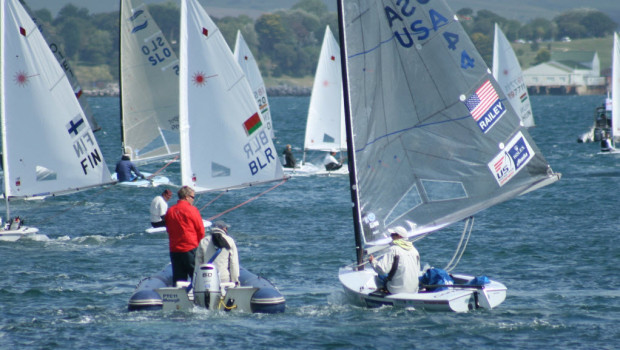Managing the Impact of Outside Assistance
Published on December 9th, 2013
When the 2013 Audi Melges 20 World Championship gets underway this week, it will bring an immensely talented 53-boat fleet to Key Largo, FL for four days of racing on December 11-14.
While the class rules have definitions to insure the helmsperson is an owner with Group 1 (amateur) credentials, there are no restrictions on the additional two or three crew persons. In fact, the preliminary scratch sheet lists only 5 Corinthian teams out of the 53 entrants.
It is expected that many of the competing teams will be aided by support boats, which brings forth two issues for events that have a preponderance of outside assistance: class community and performance benefit.
Any division between the haves and have nots, or in this case, teams with support boats and teams without them, can impact class enthusiasm. Watching well funded teams getting fast tows while other teams sail to and from the course can get tiresome.
For teams with support boats and coaches, it does not automatically give them a performance edge, but additional input from a good coach before and after each race can absolutely contribute to better results.
The 2013 Audi Melges 20 World Championship has sought to minimize the impact of outside assistance. Here is an excerpt from the Sailing Instructions:
TEAM AND PRIVATE SUPPORT BOATS
A boat shall receive no outside assistance from: support boats, cell phone or radio communication, visual or vocal signaling, transfer of equipment or victuals or otherwise once she has left the dock for the day until she has finished the last race of the day, except in the case of emergency, or motor problems that cause the boat to not make her way to the starting area.
A boat should not be towed once she has left the dock for the day until she has finished the last race of the last day, except in the case of emergency or motor problems that cause the boat to not make her way to the starting area. If in the case of a motor problem, the boat shall make every attempt to fix the problem prior to the next day’s racing and shall make the boat available for inspection by the Jury, Race Committee or class representative.
Individual coach or support boats shall not approach closer than 300 feet to any boat that is racing, except at mark roundings or the finish line where they shall not approach closer than 100 feet upwind of the windward mark or downwind of the leeward mark, and extensions of the finish line.
At the warning signal for the start, individual coach or support boats shall leave the area being used by the racing boats and may station themselves outside of either the pin or committee signal boat, but no closer to either end than 100 feet.
Click here for complete Sailing Instructions.









 We’ll keep your information safe.
We’ll keep your information safe.